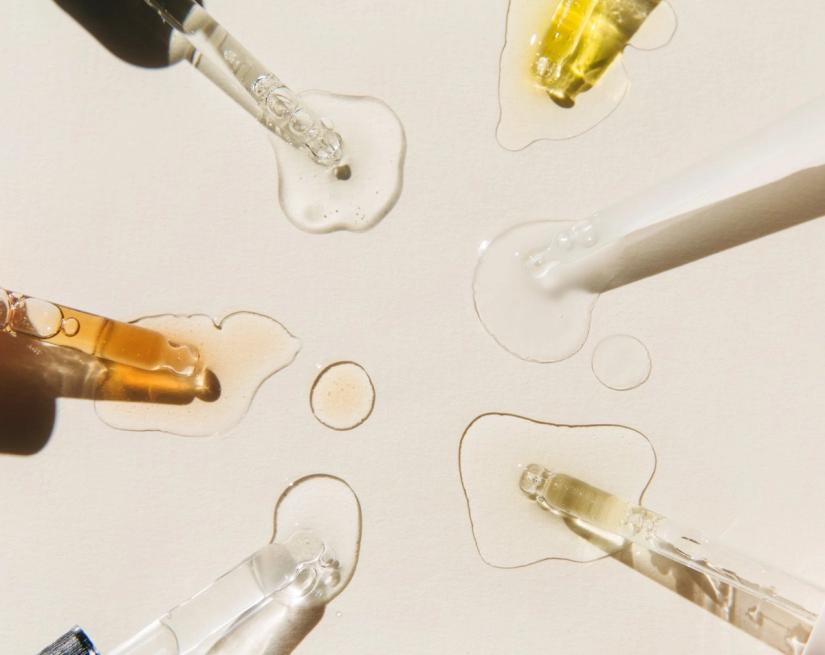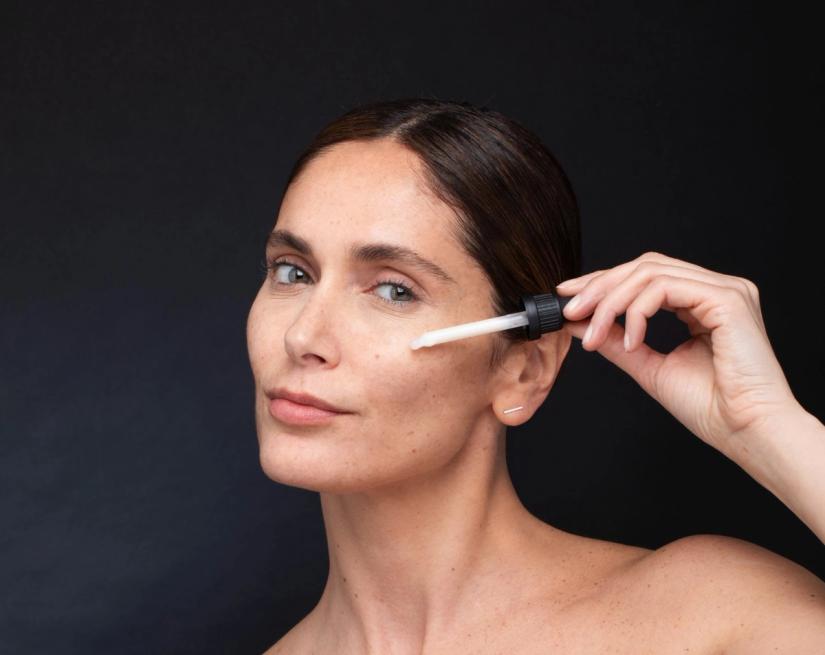skin care
A Complete List of Common Skincare Ingredients & What To Avoid
Eve Mérinville | Corporate RD Excellence & SC RD and Innovation Director
5 min read

Read The Label
As consumers, we often skim the label to see if any red flags stand out but hardly ever stop to research the ingredients. Skin care companies are required by law to provide a list of all ingredients in their products, which would seemingly make shopping for cleansers, toners, and moisturizers fairly simple, right? Wrong.
Ingredient lists are filled with scientific names of natural ingredients, chemical formulations, and catch-all terms like “natural fragrance”. When purchasing skin care, it’s crucial to take a deep dive into that product’s ingredients list to know exactly what you are getting and what your skin type needs. The personal care products industry is rife with buzz words, trends, and misinformation. Packaging and labels work in a way to grab the customer’s attention and convince them to buy the product. Just because an under eye serum uses an ingredient that is currently trending doesn’t mean it will turn back the hands of time.
As a general rule of thumb, note the first three to five ingredients listed on any skincare ingredient list. The Federal Trade Commission requires skin care companies to list ingredients in order of concentration so you know how much, or how little of a key ingredient exists in said product. Additionally, the International Nomenclature of Cosmetic Ingredients (INCI) states that all skincare companies must use the scientific name for non-plant ingredients and the Latin name for plant-based ingredients.
Being able to quickly decipher a skin care product ingredient label will help you make more informed purchases and get on the path to clear, healthy skin. Let’s dive in.
Active Skincare Ingredients & Buzzwords
1. Hyaluronic Acid
This ultra-effective ingredient has a host of anti-aging benefits because of its ability to retain water. Each molecule of hyaluronic acid (HA) attracts multiple times the amount of its weight in water, meaning moisturizing products that contain HA are incredibly effective. Those with dry skin or who live in harsh climates can greatly benefit from products that contain hyaluronic acid. Additionally, all skin types can use products with HA, unless a specific allergy is at play.
Comfort Zone offers an array of products that are focused on retaining a youthful appearance and glowing, healthy skin. Discover where to find HA in our formulas:
- Skin Regimen Lx HA4 Jelly Serum: A concentrated formula with three forms of Hyaluronic Acid.
- Hydramemory Light Sorbet Cream: Formulated with macro Hyaluronic Acid, this creamy gel is soft and supple.
- Renight Mask: Fortifying night-time mask that restores the skin’s natural barrier.
- Sublime Skin Intensive Serum: This firming, plumping serum promotes taught, bright skin.
- Sublime Skin Cream: This hyaluronic-acid cream makes the skin visibly more taught and compact.
2. Retinol
This term refers to an over-the-counter, topical, vitamin-A based skin care ingredient. Retinol is derived from retinoids (contained in prescription skin care products). This type of ingredient was originally used in acne-treatments but then gained momentum in the anti-aging category once scientists realized they reduced discoloration and scars
3. Vitamin C
Notorious for its brightening abilities, vitamin C neutralizes free radicals and stops the production of melanin, giving way to a bright, fresh appearance. This ingredient has gained immense popularity over the past decade and for good reason, it’s natural and full of antioxidants.
4. Betaine
A naturally-occurring humectant, betaine is a wonderful ingredient to look for in anti-aging products. Its molecules fill in deep wrinkles, giving a smoother, silkier effect overall. Below are the Comfort Zone products that contain betaine.
- Essential Face Wash: A creamy foam cleanser that removes impurities and makeup gently.
- Essential Milk: Made with betaine, this soothing and smoothing face wash lifts impurities out of pores while leveling deep set wrinkles.
- Essential Toner: Made without alcohol, this toner does not dry out skin but rather provides hydration and fortifies the natural barrier.
- Essential Scrub: Exfoliate dead skin away with this gentle and effective scrub.
- Essential Peeling: This delicate face mask grips on to impurities and pulls them away, leaving you with silky, nourished skin.
5. Gluconolactone
This ingredient belongs to PHA acids and is known to cleanse while smoothing one’s appearance. Gluconolactone consists of ‘thirsty’ molecules that pull water out of the air and infuse it into your skin.
- Active Pureness Toner: An exfoliating toner with purifying action for oily skin or acne-prone individuals.
- Active Pureness Gel: With 3% gluconolactate, this gel cleanser is effective at washing away dirt, grime, and toxins while leaving the skin feeling soft and supple.
- Sublime Skin Peel Pad: Single-use peeling pads are packed with vitamin c, alpha and poly-hydroxy acids.
6. Niacinamide
Also called vitamin B3, niacinamide is a noteworthy ingredient on the quest to clear, youthful skin. This water-soluble vitamin reduces the appearance of enlarged pores, improves uneven skin tone, and softens fine lines. It also feeds the skin nutrients that allow the skin to naturally fortify its barrier.
Our alcohol-free Essential Toner with Niacinamide revitalizes irritated, drab skin.
7. Prebiotic
Known as food for probiotics, prebiotics feed the good bacteria living on the surface of our skin so that it can remain healthy and strong.

List Of Common Skincare Ingredients
Cosmetics and skincare rituals have been around since at least 6,000 BCE. Most notably the Egyptian culture used a variety of milks, oils, dyes, and essential oils to create moisturizing lotions, exfoliants, and anti-aging products. While our modern skin care rituals may appear different, the end goal is the same - to treat our skin with the utmost care and retain a youthful, bright appearance.
In order for our skin to remain healthy, it needs three general types of ingredients. They are:
Skin Restoring Ingredients
In order to remain youthful and elastic, the skin needs ample amounts of moisture. Skin restoring ingredients - like retinol, peptides, linolenic acids, and niacinamide - work to reinvigorate the skin and mitigate a lackluster, dull appearance.
Antioxidants
We choose food loaded with antioxidants like goji berry smoothies or kale salads. Why would we not do the same for our skin? Antioxidant ingredients provide the healthy food that our skin’s natural biome needs to stay strong and fortified.
Skin Replenishing Ingredients
Some of the more well-researched skin replenishing ingredients are hyaluronic acid, ceramides, salicylic acid, and amino acids. These work to lock in moisture and replenish the skin’s natural stores of lubrication.
Here Are the Most Common Skincare Ingredients:
Alcohol
There are good and bad alcohols. The good types that you don’t need to avoid have a high molecular weight and are cetyl, stearyl, and cetearyl. Bad variations may include ethyl, isopropyl, denatured, and benzyl. These can dry out the skin and strip it of its natural defenses.
Aloe Vera
Commonly used in a variety of soothing ointments, aloe vera is a plant extract that provides antioxidants and relief to stressed, burned, or irritated skin.
Alpha-Hydroxy Acids (AHA)
Lactic acid and glycolic acid are two of the most common AHAs. They work to break down the glue that binds dead skin cells, thus creating a brighter shine.
Benzoyl Peroxide
This antibacterial ingredient is found in many acne-fighting products and kills bad bacteria upon contact.
Botanicals
A non-specific ingredient, botanicals can relate to anything plant-related.
Caffeine
Found in coffee and teas, caffeine is a stimulant often used in anti-aging or cellulite-reducing products.
Collagen
Our bodies naturally produce collagen but as we age, they make less and less. Made from animal proteins, collagen is a water-binding agent, keeping moisture locked into the skin and encouraging a plump, youthful appearance.
Elastin
This ingredient often appears with collagen as it's also naturally produced in our bodies. The protein is responsible for taught, firm skin.
Emollients
This can refer to plant oils, mineral oils, butters and fatty acids. An emollient is basically a thickening agent that assists the skin in holding moisture, thus creating a smoothing effect.
Essential Oils
Concentrated plant and flower extracts, essential oils are almost always combined with a carrier oil for skin care purposes. They contain antioxidants and have a variety of other properties that heal, nourish, and strengthen skin.
Glycerin
A key ingredient in many lotions and facial moisturizers, this naturally-occurring ingredient is ultra-effective in skin restoration.
Green Tea
Because it’s packed with antioxidants, green tea has been used to repair sun damaged skin and breathe life into dull, dehydrated skin.
Hyaluronic Acid (HA)
Our bodies contain certain levels of HA, however, it has been successfully recreated and added to skincare products to encourage moisture retention.
Jojoba Oil
Typically used as a base oil, jojoba is lightweight and most closely resembles the oil our skin produces.
Mineral Oil
Derived from petroleum, mineral oil is also a base oil used in a variety of massage oils, after-sun lotions, and more. It’s more likely to clog pores when compared to other base oils
Parabens
This word signifies preservatives like butylparaben, methylparaben, and ethylparaben. Some studies have shown that they contain high levels of estrogen.
Phthalates
Commonly found in hair sprays and nail polishes, phthalates are salts of phthalate acid and considered by many to be a health hazard.
Silicone
Silky textures are often the result of this ingredient, which is derived from silica.
Sulfates
Certain sulfates, like ammonium lauryl sulfate and sodium laureth sulfate can cause dryness and irritation when left too long on the skin. These are commonly found in face washes and other cleansing skincare products.
Vitamin E
An antioxidant known for its healing properties and found in abundance.
Vitamin C
A common skincare ingredient known for its antioxidant properties and brightening ability, vitamin C is also referred to as L-ascorbic acid.
Zinc Oxide
A non-irritating natural sun protectant that works with all skin types.
Ingredients To Avoid
Some skin care manufacturers opt to use lesser quality ingredients because they are so much cheaper. They can fill up the bulk of a face oil, body lotion, or cleanser with a harsher ingredient that is still regarded as safe by cosmetic governing bodies, then add a small portion of vitamin C, HA, or other trending ingredients. Their packaging may lay claim to many anti-aging, moisturizing, or acne-fighting benefits by advertising the buzz word when in fact, the product can do much more harm than good.
As a general rule of thumb, stay away from the following ingredients:
- Sulfates
- Silicone
- Phthalates
- Certain types of alcohols such as ethyl and benzyl
- Parabens
- Mineral oil in large amounts of skin is particularly acne-prone
So Here's What To Do
It’s crucial to read skin care product labels before purchasing. You’ll be better able to know what your skin likes and what it doesn’t. Identify your skin care goals, first. Regardless of if your goals include combating maskne, reducing under eye wrinkles, or minimizing dark spots, knowing the properties and characteristics of each ingredient will help you make a more informed decision.
Choose superior products that use high quality ingredients or you will simply be harming your skin in the long run. The skin is the largest organ on our bodies and our first line of defense. Treat it right by investing a little more time and money to research and procure the best.
At Comfort Zone, we pride ourselves on our B Corp status and sustainable skin care practices. We opt for recyclable packaging and employ green practices wherever we can. The personal care product industry can take its toll on the earth’s natural resources. It’s up to us, the industry leaders, to safeguard the place we all call home.



